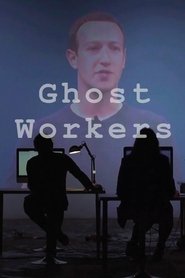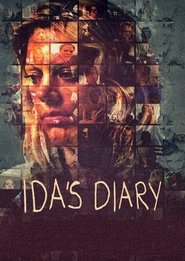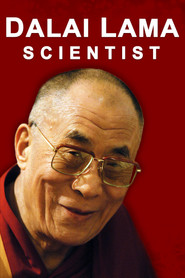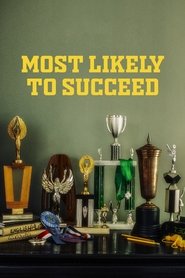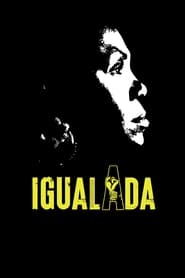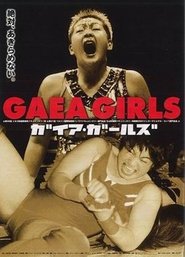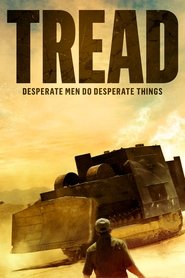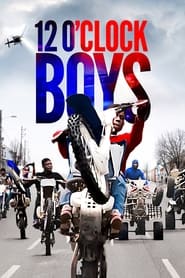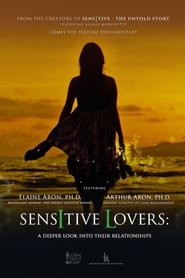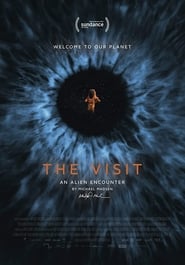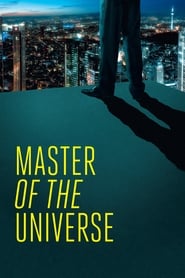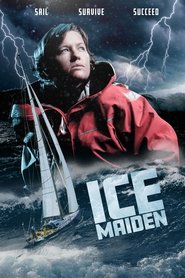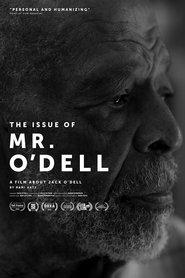Popular Documentary Movies on Kanopy - Page 132
-
Ghost Workers
2019
Ghost Workers
2019
star 8We're at the beginning of an artificial intelligence revolution that promises to change everything. Already, virtual assistants like Siri and Alexa have become a part of our daily life. But in order to run their applications, digital giants like Amazon, Google and Facebook, employ an army of invisible labour. These are disposable workers, paid as little as 10 cents an hour to feed information into computer systems. They receive neither benefits nor contract and normal labor law doesn't apply to them. Whilst millions of men and women are training artificial intelligence for next to nothing, others are being hired and hide out of sight to clean up social networks. We went undercover as one of these web cleaners, working as a content moderator for Facebook. To meet the workers hiding behind your screen, we're taking you to the factory of the future, one of the digital economy's best kept secrets. -
Ida's Diary
2015
Ida's Diary
2015
star 5.6Ida's Diary is a film about hope and courage, about finding your own identity and daring to live. It's a personal film based on Ida's own video diary from the last eight years. -
The Dalai Lama: Scientist
2019
star 6In "The Dalai Lama -- Scientist", the Dalai Lama tells the unknown story, in his own words, of his lifelong journey into the world of science and technology, and how the world has changed as a result. With extensive, rare, and never before seen footage, this film tells the very human story of the Dalai Lama that no one knows. -
Two American Families: 1991-2024
2024
star 8It’s a central premise of the American dream: If you’re willing to work hard, you’ll be able to make a living and build a better life for your children. But what if working hard isn’t enough to get ahead — or even to ensure your family’s basic financial stability? Two American Families: 1991-2024, a special, two-hour documentary filmed over more than 30 years, is a portrait of perseverance from FRONTLINE, Bill Moyers, and filmmakers Tom Casciato and Kathleen Hughes that raises unsettling questions about the changing nature of the American economy and the impact on people struggling to make a living. This is the saga of two families in Milwaukee, Wisconsin — one Black, the Stanleys, and one white, the Neumanns — who have spent the past 34 years battling to keep from sliding into poverty, and who refuse to give up despite the economic challenges that their stories reveal. -
Most Likely to Succeed
2019
star 8In 2007, four teenagers from disparate backgrounds are voted "Most Likely To Succeed" during their senior year of high school. Over a ten-year period, they each chart their own version of success and navigate the unpredictability of American life in the 21st Century. -
A Year in Champagne
2014
A Year in Champagne
2014
star 6.2The exploding cork. Endless tiny bubbles floating up and up in the glass. An indulgence. A celebration. A seduction. A triumph. This is the essence of Champagne, isn’t it? But it’s not just bubbles in a glass that makes the wine, or the mystique. Only sparkling wine produced within the boundaries of the Champagne region is truly “Champagne.” At first glance, the region is not an obvious source of romance. Champagne’s history is grim and bloody, swept by war and destruction from Attila the Hun to the filthy trenches of WWI and the Nazi depredations of WWII. The environment for winemaking is desperately hard — northerly latitude, chalky soil, copious rain, frost, rot. Yet it’s these difficulties that help make the wine unique. -
Igualada
2024
Igualada
2024
star 7.5In one of Latin America’s most unequal countries, Francia Márquez, a Black Colombian rural activist, challenges the status quo with a presidential campaign that reappropriates the derogatory term “Igualada” — someone who acts as if they deserve rights that supposedly don’t correspond to them — and inspires a nation to dream. -
Murder Rap: Inside the Biggie and Tupac Murders
2015
star 7.1Two of the most notorious unsolved cases in the history of American crime – the murders of renowned rap stars Tupac Shakur and Biggie Smalls – have been the subject of exhaustive investigations, relentless speculation, and a web of conspiracy theories and dark secrets. Now, for the first time, the true story behind these sensational cases is laid bare in "Murder Rap: Inside the Biggie and Tupac Murders". Using information sourced from hundreds of police case files, taped confessions never shown before, and interviews with the lead detective and witnesses, this is the riveting account of the task force that finally exposed the shocking truth behind the deaths of these two rap music icons. -
Gaea Girls
2000
Gaea Girls
2000
star 6.4This fascinating documentary is based around the Japanese wrestling organisation Gaea's rural training camp, and traces, in the main, the careers of four hopefuls. In charge are two magnificent specimens, the butch champion Chigusa Nagayo, still venting her hurt at the hands of her army father as she tries to whip her surrogate daughters through the pain and commitment barriers; and her sophisticated and slightly menacing Chairman. It's a gruelling, physical film, as you would expect, but the makers don't make heavy weather of it. And it certainly disposes of any idea that the game is faked. -
Tread
2020
Tread
2020
star 6.6Pushed to his breaking point, a master welder in a small town at the foot of the Rocky Mountains quietly fortifies a bulldozer with 30 tons of concrete and steel and seeks to destroy those he believes have wronged him. -
We Are the Giant
2014
We Are the Giant
2014
star 5.8We Are the Giant tells the stories of ordinary individuals who are transformed by the moral and personal challenges they encounter when standing up for what they believe is right. Powerful and tragic, yet inspirational, their struggles for freedom echo across history and offer hope against seemingly impossible odds. -
Before Stonewall
1984
Before Stonewall
1984
star 6.5New York City's Stonewall Inn is regarded by many as the site of gay and lesbian liberation since it was at this bar that drag queens fought back against police June 27-28, 1969. This documentary uses extensive archival film, movie clips and personal recollections to construct an audiovisual history of the gay community before the Stonewall riots. -
In Their Name
2022
In Their Name
2022
Filmmaker Peter Hegedus embarks on the challenging journey to make Sorella's Story, an immersive 360° film set on the beaches of Latvia in December 1941, when thousands of Jewish Women and children perished at the hands of Nazi collaborators. Along the way Peter teams up with Jewish-Australian 90-year-old Ethel Davies whose family was also killed in the same massacre. -
12 O'Clock Boys
2013
12 O'Clock Boys
2013
star 6Pug, a wisecracking 13 year old living on a dangerous Westside block, has one goal in mind: to join The Twelve O'Clock Boys; the notorious urban dirt-bike gang of Baltimore. Converging from all parts of the inner city, they invade the streets and clash with police, who are forbidden to chase the bikes for fear of endangering the public. When Pug's older brother dies suddenly, he looks to the pack for mentorship, spurred by their dangerous lifestyle. Pug's story is coupled with unprecedented, action-packed coverage of the riders in their element. The film presents the pivotal years of change in a boy's life growing up in one of the most dangerous and economically depressed cities in the US. -
Sensitive Lovers
2020
Sensitive Lovers
2020
Dr. Elaine Aron and Dr. Arthur Aron explain how negative childhood experiences and buried traumas affect our adult relationships and provide suggestions for for wiser, more skillful and fulfilling relationships. -
The Visit: An Alien Encounter
2015
star 6“This film documents an event that has never taken place…” With unprecedented access to the United Nations’ Office for Outer Space Affairs, leading space scientists and space agencies, The Visit explores humans’ first encounter with alien intelligent life and thereby humanity itself. “Our scenario begins with the arrival. Your arrival.” -
Master of the Universe
2013
star 7.2He was one of Germany's leading investment experts with an income of several million Euros per day. Now, he sits on one of the upper floors of an empty bank building in the middle of Frankfurt, overlooking a skyline of glass and steel. And talks. In an extended mix of a monologue and an in-depth interview, which is as frightening as it is fascinating, he shares his inside knowledge from a megalomaniac parallel world where illusions are the market's hardest currency. Marc Bauder's 'Master of the Universe' is based on meticulous research and provides us with geniune insight into the notoriously secretive and self-protective 'universe' of which our nameless protagonist experiences himself a master. Where other films on the financial meltdown have focused on the epic nature of larger-than-life business, Bauder probes the mentality that made it possible in the first place. A tense drama where psychology meets finance - two things that are more closely linked than you would like to believe. -
Ice Maiden
2024
Ice Maiden
2024
Ice Maiden charts the uncompromising determination of Australian Lisa Blair, who became the first woman in history to sail solo around Antarctica. -
The Issue of Mr. O'Dell
2020
A documentary examining the life of civil rights organizer, Jack O'Dell, a close colleague of Dr. Martin Luther King, Jr. and a force in his own right. -
Brasslands
2013
Brasslands
2013
star 6.7Half a million people descend upon a tiny Serbian village for the 50th anniversary of the world's largest trumpet festival. Brasslands chronicles the cultural and musical collisions through the personal journeys of 3 musicians - American, Serbian, Roma - whose lives are bound to Balkan brass for very different reasons.
 Netflix
Netflix
 Amazon Prime Video
Amazon Prime Video
 Apple iTunes
Apple iTunes
 Apple TV Plus
Apple TV Plus
 Disney Plus
Disney Plus
 Google Play Movies
Google Play Movies
 Paramount Plus
Paramount Plus
 Hulu
Hulu
 HBO Max
HBO Max
 YouTube
YouTube
 fuboTV
fuboTV
 Peacock
Peacock
 Peacock Premium
Peacock Premium
 Amazon Video
Amazon Video
 The Roku Channel
The Roku Channel
 AMC+
AMC+
 Kocowa
Kocowa
 Hoopla
Hoopla
 The CW
The CW
 Vudu
Vudu
 Starz
Starz
 Showtime
Showtime
 PBS
PBS
 Pantaflix
Pantaflix
 FXNow
FXNow
 Tubi TV
Tubi TV
 Kanopy
Kanopy
 Comedy Central
Comedy Central
 Crunchyroll
Crunchyroll
 Microsoft Store
Microsoft Store
 Redbox
Redbox
 Sun Nxt
Sun Nxt
 ABC
ABC
 DIRECTV
DIRECTV
 Crackle
Crackle
 Fandor
Fandor
 Plex
Plex
